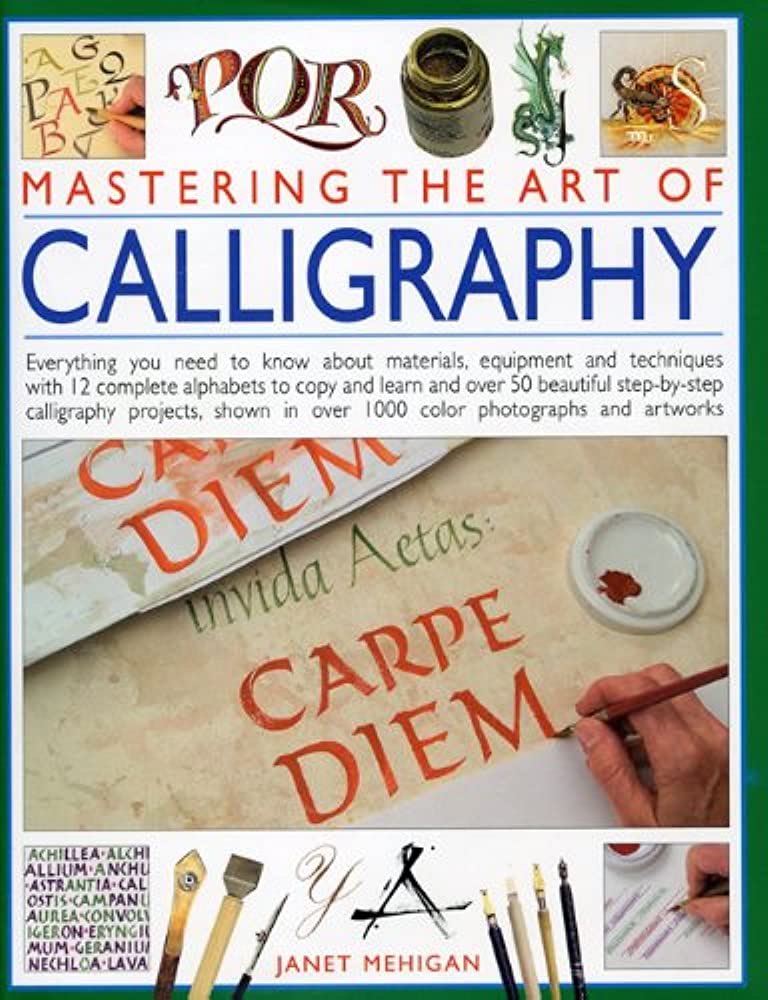Printer
Mastering the Art of Calligraphy: Perfect Your Print Technique
Are you a fan of beautiful handwriting and artistic lettering? If so, calligraphy may be the perfect hobby for you. Learning the art of calligraphy can not only improve your handwriting, but it can also serve as a form of creative self-expression.
However, mastering calligraphy takes patience, dedication, and practice. It involves developing a steady hand and understanding the fundamental principles of proper letter formation. Anyone can learn calligraphy, but becoming proficient in this intricate art requires time and commitment.
So, how do you start? In this article, we will explore the basics of calligraphy and provide tips to help you perfect your print technique. From choosing the right tools and materials to practicing the correct strokes and understanding ink flow, we will guide you through every step necessary to become an expert in this beautiful traditional art form. So, grab a pen and paper, and let’s get started!
Whether you’re a beginner or an experienced calligrapher looking to improve your skills, this article is for you. It’s time to hone your craft and elevate your penmanship to the next level. By the end of this article, you’ll have the knowledge and techniques to produce stunning calligraphy that will impress yourself and others. Let’s delve into the world of calligraphy and perfect our print technique.
“Calligraphy Print” ~ bbaz
Mastering the Art of Calligraphy: Perfect Your Print Technique
Tools Required for Calligraphy
The Best Paper for Calligraphy Writing
The Right Technique for Hold Pen or Brush
Choosing the Right Style and Font of Calligraphy
Different Inks Used in Calligraphy
The Importance of Practice
Online Tutorials for Beginners
Calligraphy vs Typography
The Art of Calligraphy in Japanese Culture
The Beauty in Imperfection
Mastering the Art of Calligraphy: Perfect Your Print Technique
Thank you for taking the time to read this article on mastering the art of calligraphy and perfecting your print technique. We hope that our tips and advice have been helpful in getting you started or improving your skills. In conclusion, calligraphy is a beautiful and timeless art form that can bring joy and inspiration to your life and those around you. Whether you are looking to create elegant invitations for a special occasion or just want to add some personal flair to your handwritten notes, mastering calligraphy can be a rewarding and fulfilling pursuit.
One of the most important things to remember when practicing calligraphy is to be patient and persistent. As with any new skill, it takes time and practice to get comfortable and confident with your technique. Don’t be discouraged if your initial attempts don’t turn out exactly as you envisioned – keep practicing and experimenting with different tools, inks, and styles until you find what works best for you.
Finally, we encourage you to seek out resources and communities to support your journey in calligraphy. There are many online forums, social media groups, and local classes and workshops where you can connect with other calligraphers, learn new techniques, and get feedback on your work. Above all, have fun and enjoy the process of exploring the art of calligraphy – we wish you all the best on your creative journey!
People Also Ask about Mastering the Art of Calligraphy: Perfect Your Print Technique
- What is calligraphy?
- Why is calligraphy important?
- What are the benefits of learning calligraphy?
- What are the different types of calligraphy?
- How do I get started with calligraphy?
- What is calligraphy?
- Why is calligraphy important?
- What are the benefits of learning calligraphy?
- What are the different types of calligraphy?
- How do I get started with calligraphy?
Calligraphy is the art of beautiful handwriting. It involves using a variety of tools and techniques to create elegant and decorative lettering.
Calligraphy has been an important art form for centuries. It has been used to create everything from religious texts to official documents. In addition, calligraphy is a relaxing and meditative practice that can help improve focus and creativity.
Learning calligraphy can provide a number of benefits, including improved hand-eye coordination, increased focus and concentration, and a greater appreciation for the art of lettering. In addition, calligraphy can be a fun and rewarding hobby.
There are many different types of calligraphy, including Western calligraphy (which includes styles such as Gothic, Italic, and Copperplate), Chinese calligraphy, Japanese calligraphy, and Arabic calligraphy.
To get started with calligraphy, you will need some basic supplies, including a calligraphy pen or brush, ink, and paper. You can find many beginner calligraphy kits online or at your local art supply store. It’s also helpful to find some instructional resources, such as books or online tutorials, to help you learn the basics of calligraphy.

